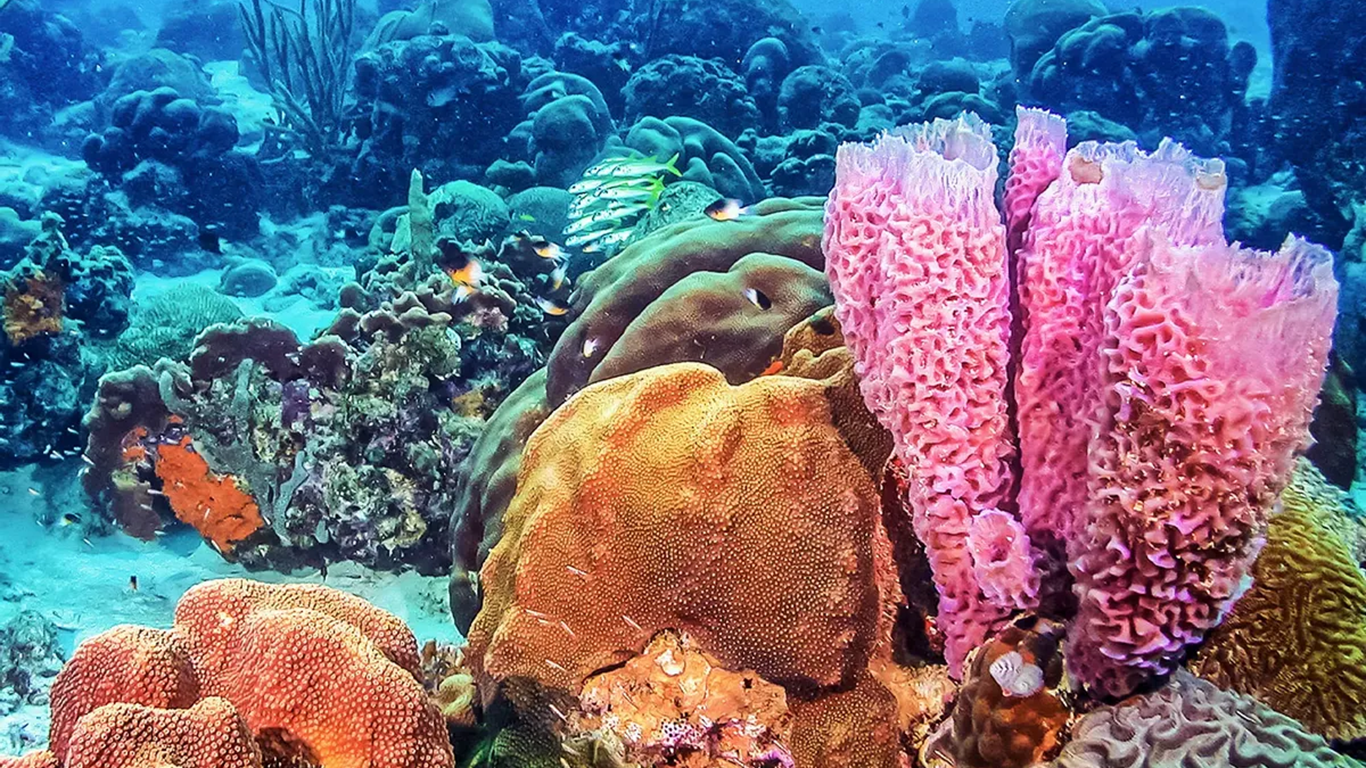Spongers of the Sea - Lifespan, Food, and Reproduce
"Spongers of the sea" is a common term for sponges, which are a type of aquatic animal that live in the ocean and have a porous body that can absorb water and nutrients. Sponges are considered one of the oldest animal groups still in existence today, with fossil records dating back to 580 million years ago.
Sponges have a unique body structure that consists of many channels and cavities that can absorb water and food particles. They are filter feeders, meaning that they extract small particles of food and oxygen from the water that flows through their bodies.
They play an important role in marine ecosystems by filtering water and removing organic matter, which helps to maintain water quality and provide habitat for other marine organisms.
Sponges come in a variety of shapes, sizes, and colors, and can be found in many different marine environments, from shallow reefs to deep-sea trenches. Some sponges even have medicinal properties and have been used in traditional medicine to treat a variety of ailments.
Overall, sponges are an important and fascinating group of animals that play a crucial role in maintaining the health of our oceans.
Lifespan of a Sea Sponge
The lifespan of a sea sponge can vary depending on the species and environmental conditions. Some sea sponges can live for several decades, while others have a much shorter lifespan.
For example, some species of barrel sponges have been known to live for over 2,000 years, making them some of the oldest living animals on the planet. Other types of sponges, like encrusting sponges, have a much shorter lifespan, typically only a few years.
The lifespan of a sea sponge is influenced by several factors, including the quality of the water they live in, food availability, and the presence of predators or diseases. Some species of sponges have the ability to regenerate their body parts if they are damaged, which can help them to live longer.
Overall, the lifespan of a sea sponge can be quite long, but it is highly variable and depends on a variety of factors.
What Does a Sea Sponge Eat?
Sea sponges are filter feeders, which means they eat by filtering tiny particles of food and other organic matter from the water that flows through their bodies. They have a unique body structure that consists of many channels and cavities that allow water to flow in and out, and specialized cells called choanocytes that help to capture and digest food particles.
Sea sponges can feed on a variety of small particles, including plankton, bacteria, and other microscopic organisms that are suspended in the water. They use their choanocytes to create a current of water that flows through their body, which helps them to capture and trap food particles.
Some species of sponges also have symbiotic relationships with photosynthetic algae, which live inside their bodies and produce food through photosynthesis. In exchange for the food produced by the algae, the sponge provides shelter and nutrients to the algae.
Overall, sea sponges are important filter feeders that play a crucial role in marine ecosystems by helping to maintain water quality and providing food and habitat for other marine organisms.
How Does a Sponge Reproduce
Sponges have different methods of reproduction, but they generally reproduce both sexually and asexually.
Asexual reproduction in sponges occurs through budding or fragmentation. In budding, a new sponge grows from the parent sponge and eventually separates into a separate individual. Fragmentation occurs when a sponge is broken into smaller pieces, which then develop into new individuals.
Sexual reproduction in sponges involves the release of sperm and eggs into the water. Sponges are hermaphrodites, which means that they have both male and female reproductive organs. However, they cannot self-fertilize, so they must exchange sperm with other individuals in order to fertilize their eggs.
After fertilization, the sponge embryo develops into a free-swimming larva, which settles on a substrate and grows into an adult sponge. The larva undergoes metamorphosis and transforms into a juvenile sponge that is attached to the substrate.
Overall, sponges have a unique and fascinating reproductive biology that involves both asexual and sexual reproduction, and they play an important role in maintaining the health and biodiversity of marine ecosystems.
10 Facts About Sea Sponges
- Sea sponges are aquatic animals that belong to the phylum Porifera.
- They are among the oldest animals on earth, with some fossil records dating back over 580 million years.
- Sea sponges come in a wide variety of shapes, sizes, and colors, and can be found in all of the world's oceans.
- They are filter feeders, meaning that they extract small particles of food and oxygen from the water that flows through their bodies.
- Sea sponges play an important role in marine ecosystems by filtering water and removing organic matter, which helps to maintain water quality and provide habitat for other marine organisms.
- Some species of sea sponges are used in traditional medicine to treat a variety of ailments, and have been shown to have anti-inflammatory and anti-cancer properties.
- Sea sponges have a unique body structure that consists of many channels and cavities that can absorb water and food particles.
- They reproduce sexually by releasing eggs and sperm into the water, which then fertilize and develop into larvae.
- Some species of sea sponges have the ability to regenerate their bodies if they are damaged or injured.
- Sea sponges are important and fascinating animals that are still being studied by scientists to understand their biology, ecology, and potential uses in medicine and other fields.


Post a Comment for "Spongers of the Sea - Lifespan, Food, and Reproduce"
Komentar anda akan di moderasi terlebih dahulu baru akan di publish.